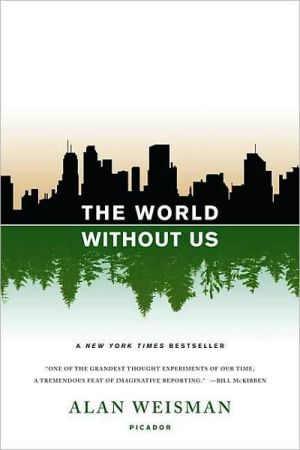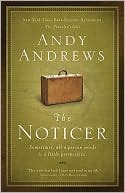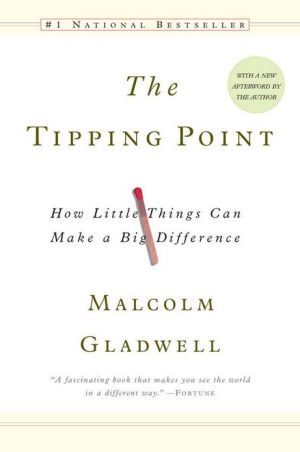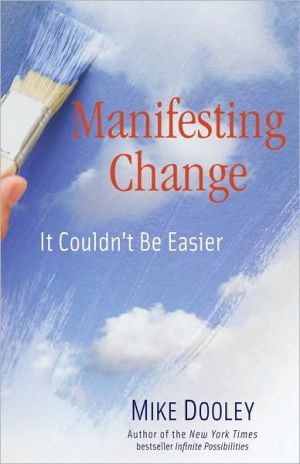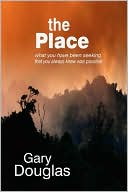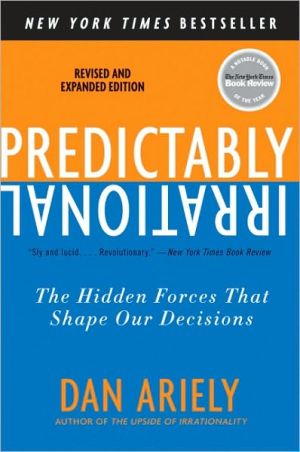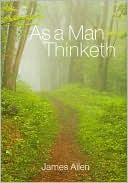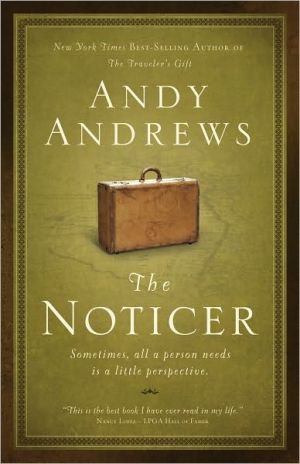The World Without Us
Time #1 Nonfiction Book of 2007\ Entertainment Weekly #1 Nonfiction Book of 2007\ Finalist for the 2007 National Book Critics Circle Award\ Salon Book Awards 2007\ Amazon Top 100 Editors’ Picks of 2007 (#4)\ Barnes and Noble 10 Best of 2007: Politics and Current Affairs\ Kansas City Star’s Top 100 Books of the Year 2007\ Mother Jones’ Favorite Books of 2007\ South Florida Sun-Sentinel Best Books of the Year 2007\ Hudson’s Best Books of 2007\ St. Louis Post-Dispatch Best Books of 2007\ St....
Search in google:
A penetrating take on how our planet would respond without the relentless pressure of the human presence The New York Times - Janet Maslin This book's global-scale dismay about humanity's environmental impact is its most important theme. But it's Mr. Weisman's more marginal facts that give The World Without Us so much curiosity value…From the gyre that is the Great Pacific Garbage Patch to the flower-growers of Kenya to the Rothamsted Research Archive in Britain, a repository for more than 300,000 soil samples, Mr. Weisman covers a huge amount of terrain. His research is prodigious and impressive.
\ Chapter One\ A Lingering Scent of Eden\ You may never have heard of the Bialowieza Puszcza. But if you were raised somewhere in the temperate swathe that crosses much of North America, Japan, Korea, Russia, several former Soviet republics, parts of China, Turkey, and Eastern and Western Europe—including the British Isles—something within you remembers it. If instead you were born to tundra or desert,subtropics or tropics, pampas or savannas, there are still places on Earth kindred to this puszcza to stir your memory, too. Puszcza, an old Polish word, means forest primeval. Straddling the border between Poland and Belarus, the half-million acres of the Bialowieza Puszcza contain Europe’s last remaining fragment of old-growth, lowland wilderness. Think of themisty, brooding forest that loomed behind your eyelids when, as a child, someone read you the Grimm Brothers’ fairy tales. Here, ash and linden trees tower nearly 150 feet, their huge canopies shading a moist, tangled understory of hornbeams, ferns, swamp alders and crockery-sized fungi. Oaks, shrouded with half a millennium of moss, grow so immense here that great spotted woodpeckers store spruce cones in their three-inch-deep bark furrows. The air, thick and cool, is draped with silence that parts briefly for a nutcracker’s croak, a pygmy owl’s low whistle, or a wolf’s wail, then returns to stillness. The fragrance that wafts from eons of accumulated mulch in the forest’s core hearkens to fertility’s very origins. In the Bialowieza, the profusion of life owes much to all that is dead. Almost a quarter of the organic mass aboveground is inassorted stages of decay—more than 50 cubic yards of decomposing trunks and fallen branches on every acre, nourishing thousands of species of mushrooms, lichens, bark beetles, grubs, and microbes that are missing from the orderly, managed woodlands that pass as forests elsewhere. Together those species stock a sylvan larder that provides for weasels, pine martens, raccoons, badgers, otters, fox, lynx,wolves, roe deer, elk, and eagles. More kinds of life are found here than anywhere else on the continent—yet there are no surrounding mountains or sheltering valleys to form unique niches for endemic species. The Bialowieza Puszcza is simplya relic of what once stretched east to Siberia and west to Ireland. The existence in Europe of such a legacy of unbroken biological antiquity owes, unsurprisingly, to high privilege. During the 14th century, a Lithuanian duke named Wladysl.aw Jagiello, having successfully allied his grand duchy with the Kingdom of Poland, declared the forest a royal hunting preserve. For centuries, it stayed that way. When the Polish-Lithuanian unionwas finally subsumed by Russia, the Bialowieza became the private domain of the tsars. Although occupying Germans took lumber and slaughtered game during World War I, a pristine core was left intact, which in 1921 became a Polish national park. The timber pillaging resumed briefly under the Soviets, but when the Nazis invaded, a nature fanatic named Hermann Göring decreed the entire preserve off-limits, except by his pleasure. Following World War II, a reportedly drunken Josef Stalin agreed one evening in Warsaw to let Poland retain two-.fifths of the forest. Little else changed under communist rule, except for construction of some elite hunting dachas—in one of which,Viskuli, an agreement was signed in 1991 dissolving the Soviet Union into free states. Yet, as it turns out, this ancient sanctuary is more threatened under Polish democracy and Belarusian independence than it was during seven centuries of monarchs and dictators. Forestry ministries in both countries tout increased management to preserve the Puszcza’s health. Management, however, often turns out to be a euphemism for culling—and selling—mature hardwoods that otherwise would one day return a windfall of nutrients to the forest. It is startling to think that all Europe once looked like this Puszcza. To enter it is to realize that most of us were bred to a pale copy of what nature intended. Seeing alders with trunks seven feet wide, or walking through stands of the tallest trees here—gigantic Norway spruce, shaggy as Methuselah—should seem as exotic as the Amazon or Antarctica to someone raised among the comparatively puny, second-growth woodlands found throughout the Northern Hemisphere. Instead, what’s astonishing is how primally familiar it feels. And, on some cellular level, how complete. Andrzej Bobiec recognized it instantly. As a forestry student in Krakow, he’d been trained to manage forests for maximum productivity, which included removing excess organic litter lest it harbor pests like bark beetles. Then, on a visit here he was stunned to discover 10 times more biodiversity than in any forest he’d ever seen. It was the only place left with all nine European woodpecker species, because, he realized, some of them only nest in hollow, dying trees. They can’t survive in managed forests, he argued to his forestry professors. “The Bialowieza Puszcza has managed itself perfectly well for millennia. The husky, bearded young Polish forester became instead a forest ecologist. He was hired by the Polish national park service. Eventually, he was .red for protesting management plans that chipped ever closer to the pristine core of the Puszcza. In various international journals, he blistered official policies that asserted that forests will die without our thoughtful help, or that justified cutting timber in the Bialowieza’s surrounding buffer to reestablish the primeval character of stands. Such convoluted thinking, he accused, was rampant among Europeans who have hardly any memory of forested wilderness. To keep his own memory connected, for years he daily laced his leather boots and hiked through his beloved Puszcza. Yet although he ferociously defends those parts of this forest still undisturbed by man, Andrzej Bobiec can’t help being seduced by his own human nature. Alone in the woods, Bobiec enters into communion with fellow Homo sapiens through the ages. A wilderness this pure is a blank slate to record human passage: a record he has learned to read. Charcoal layers in the soil show him where gamesmen onceused fire to clear parts of the forest for browse. Stands of birch and trembling aspen attest to a time when Jagiello’s descendants were distracted from hunting, perhaps by war, long enough for these sun-seeking species to recolonize game clearings. In their shade grow telltale seedlings of the hardwoods that were here before them. Gradually, these will crowd out thebirch and aspen, until it will be as if they were never gone. Whenever Bobiec happens on an anomalous shrub like hawthorn or on an old apple tree, he knows he’s in the presence of the ghost of a log house long ago devoured by the same microbes that can turn the giant trees here back into soil. Any lone, massive oak he finds growing from a low, clover-covered mound marks a crematorium. Its roots have drawn nourishment from the ashes of Slavic ancestors of today’s Belorusians, who came from the east 900 years ago. On the northwest edge of the forest,Jews from five surrounding shtetls buried their dead. Their sandstone and granite headstones from the 1850s, mossy and tumbled by roots, have already worn so smooth that they’ve begun to resemble the pebbles left by their mourning relatives, who themselves long ago departed. Andrzej Bobiec passes through a blue-green glade of Scots pine, barely a mile from the Belarusian border. The waning October afternoon is so hushed, he can hear snowflakes alight. Suddenly, there’s a crashing in the underbrush, and a dozen wisent—Bison bonasus, European bison—burst from where they’ve been browsing on young shoots. Steaming and pawing, their huge black eyes glance just long enough for them to do what their own ancestors discovered they must upon encountering one of these deceptively frail bipeds: they flee. Just 600 wisent remain in the wild, nearly all of them here—or just half, depending on what’s meant by here. An iron curtain bisects this paradise, erected by the Soviets in 1980 along the border to thwart escapees to Poland’s renegade Solidaritymovement. Although wolves dig under it, and roe deer and elk are believed to leap it, the herd of these largest of Europe’smammals the world without us remains divided, and with it, its gene pool—divided and mortally diminished, some zoologists fear. Once, following World War I, bison from zoos were brought here to replenish a species nearly extirpated by hungry soldiers. Now, a remnant of a Cold War threatens them again. Belarus, which well after communism’s collapse has yet to remove statues of Lenin, also shows no inclination to dismantle the fence, especially as Poland’s border is now the European Union’s. Although just 14 kilometers separate the two countries’ park headquarters, to see the Belovezhskaya Pushcha, as it is called in Belorusian, a foreign visitor must drive 100 miles south, take a train across the border to the city of Brest, submit to pointless interrogation, and hire a car to drive back north. Andrzej Bobiec’s Belorusian counterpart and fellow activist, Heorhi Kazulka, is a pale, sallow invertebrate biologist and former deputy director of Belarus’s side of the primeval forest. He was also .red by his own country’s park service, for challenging one of the latest park additions—a sawmill. He cannot risk being seen with Westerners. Inside the Brezhnev-era tenement where he lives at the forest’s edge, he apologetically offers visitors tea and discusses his dream of an international peace park where bison and moose would roam and breed freely. The Pushcha’s colossal trees are the same as those in Poland; the same buttercups, lichens, and enormous oak leaves; the same circling white-tailed eagles, heedless of the razor-wire barrier below. In fact, on both sides, the forest is actually growing, as peasant populations leave shrinking villages for cities. In this moist climate, birch and aspen quickly invade their fallow potato fields; within just two decades, farmland gives way to woodland. Under the canopy of the pioneering trees, oak, maple, linden, elm, and spruce regenerate. Given 500 years without people, a true forest could return. The thought of rural Europe reverting one day to original forest is heartening. But unless the last humans remember to first remove Belarus’s iron curtain, its bison may wither away with them. Excerpted from The World Without Us. By Alan WeismanCopyright © 2007 by Alan Weisman.Published in the United States by St. Martin’s PressAll rights reserved. This work is protected under copyright laws and reproduction is strictly prohibited. Permission to reproduce the material in any manner or medium must be secured from the publisher.
\ From Barnes & NobleStarting with the chilling premise of our sudden extinction, Alan Weisman combines science with speculation to take us on an audacious tour of what the planet might be like without us. Drawing upon the expertise of engineers, naturalists, scientists, zoologists, oil refiners, biologists, religious leaders, and others, Weisman weaves an evocative narrative that's like a chilling walk through a haunted house -- we witness the disintegration of homes and cities, watch as species wax and wane. But what a walk it is. Weisman has given us a colorful and endlessly fascinating fantasy that's also a shocking environmental wake-up call.\ \ \ \ \ From the Publisher\ "This is one of the grandest thought experiments of our time, a tremendous feat of imaginative reporting."--Bill McKibben, author of The End of Nature and Deep Economy: The Wealth of Communities and the Durable Future\ "Brilliantly creative . . . An audacious intellectual adventure . . . His thought experiment is so intellectually fascinating, so oddly playful, that it escapes categorizing and clichés. . . . It sucks us in with a vision of what is, what has been, and what is yet to come. . . . It's a trumpet call that sounds from the other end of the universe and from inside us all."--Salon\ "An astonishing mass of reportage that envisions a world suddenly bereft of humans."--The Atlanta Journal-Constitution\ "A fascinating nonfiction eco-thriller . . . Weisman's gripping fantasy will make most readers hope that at least some of us can stick around long enough to see how it all turns out."--The New York Times Book Review\ "Alan Weisman has produced, if not a Bible, at least a Book of Revelation."--Newsweek\ "The book boasts an amazingly imaginative conceit that manages to tap into underlying fears and subtly inspire us to consider our interaction with the planet."--The Washington Post\ "Extraordinarily farsighted . . . Beautiful and passionate."--The Boston Globe\ "Grandly entertaining."--Time\ "The World Without Us gradually reveals itself to be one of the most satisfying environmental books of recent memory, one devoid of self-righteousness, alarmism, or tiresome doomsaying."--Pittsburgh Post-Gazette\ "A refreshing, and oddly hopeful, look at the fate of the environment."--BusinessWeek\ "This book is the very DNA of hope."--The Globe and Mail (Toronto)\ "Prodigious and impressive."--The New York Times\ "I don't think I've read a better nonfiction book this year."--Lev Grossman, Time Book Critic\ "In his provocative new book, The World Without Us, Alan Weisman adds a dash of fiction to his science to address a despairing problem: the planet's health."—U.S. News & World Report\ "An exacting account of the processes by which things fall apart. The scope is breathtaking . . . the clarity and lyricism of the writing itself left me with repeated gasps of recognition about the human condition. I believe it will be a classic."--Dennis Covington, author of National Book Award finalist Salvation on Sand Mountain\ "One of the most ambitious 'thought experiments' ever."--The Cincinnati Enquirer\ "Alan Weisman offers us a sketch of where we stand as a species that is both illuminating and terrifying. His tone is conversational and his affection for both Earth and humanity transparent."--Barry Lopez, author of Arctic Dreams\ "Fascinating, mordant, deeply intelligent, and beautifully written, The World Without Us depicts the spectacle of humanity's impact on the planet Earth in tragically poignant terms that go far beyond the dry dictates of science. This is a very important book for a species playing games with its own destiny."--James Howard Kunstler, author of The Long Emergency\ "Weisman's enthralling tour of the world of tomorrow explores what little will remain of ancient times while anticipating, often poetically, what a planet without us would be like."--Publishers Weekly (starred)\ "The imaginative power of The World Without Us is compulsive and nearly hypnotic--make sure you have time to be kidnapped into Alan Weisman's alternative world before you sit down with the book, because you won't soon return. This is a text that has a chance to change people, and so make a real difference for the planet."--Charles Wohlforth, author of Los Angeles Times Book Prize–winning The Whale and the Supercomputer\ "Weisman is a thoroughly engaging and clarion writer fueled by curiosity and determined to cast light rather than spread despair. His superbly well-researched and skillfully crafted stop-you-in-your-tracks report stresses the underappreciated fact that humankind's actions create a ripple effect across the web of life."--Booklist (starred)\ \ \ \ Jennifer SchuesslerIn his morbidly fascinating nonfiction eco-thriller, The World Without Us, Weisman imagines what would happen if the earth's most invasive species—ourselves—were suddenly and completely wiped out. Writers from Carson to Al Gore have invoked the threat of environmental collapse in an effort to persuade us to change our careless ways. With similar intentions but a more devilish sense of entertainment values, Weisman turns the destruction of our civilization and the subsequent rewilding of the planet into a Hollywood-worthy, slow-motion disaster spectacular and feel-good movie rolled into one…In the end, it's the cold facts and cooler heads that drive Weisman's cautionary message powerfully home. When it comes to mass extinctions, one expert tells him, "the only real prediction you can make is that life will go on. And that it will be interesting." Weisman's gripping fantasy will make most readers hope that at least some of us can stick around long enough to see how it all turns out.\ —The New York Times Book Review\ \ \ \ \ Janet MaslinThis book's global-scale dismay about humanity's environmental impact is its most important theme. But it's Mr. Weisman's more marginal facts that give The World Without Us so much curiosity value…From the gyre that is the Great Pacific Garbage Patch to the flower-growers of Kenya to the Rothamsted Research Archive in Britain, a repository for more than 300,000 soil samples, Mr. Weisman covers a huge amount of terrain. His research is prodigious and impressive.\ —The New York Times\ \ \ \ \ Publishers WeeklyBecause of the scientific terminology and the interlinked data amassed bit by bit, this is not an easy read for narrator or lay listener. But it's a fascinating book, and Grupper handles it well. Grupper's careful narration brings to life Weisman's judicious organization, unambiguous grammatical structure and vivid descriptions of what would become of land, sea, fish, flora and fauna should humans disappear from the face of the earth. Weisman explains the earth's capacity for self-healing. Unchecked by human intervention, a city like New York would flood within days, its buildings and infrastructure would collapse, and soon the city would revert to its original ecosystem. But the message of the book is our legacy to the universe: "Every bit of plastic manufactured over the last 80 years or so still remains somewhere in the environment." Weisman and Grupper convert abstract environmental concepts into concrete ideas. Broadly and meticulously researched, finely interwoven journalism and imaginative projection, the book is an utterly convincing call to action. Simultaneous release with the St. Martin's/Dunne hardcover (Reviews, May 14). (July)\ Copyright 2007 Reed Business Information\ \ \ \ \ Kirkus ReviewsNicely textured account of what the Earth would look like if humans disappeared. Disaster movies have depicted the State of Liberty poking out from the ground and empty cities overgrown with trees and vines, but what would really happen if, for one reason or another, every single one of us vanished from the planet? Building on a Discover magazine article, Weisman (Journalism/Univ. of Arizona; An Echo in My Blood, 1999, etc.) addresses the question. There are no shocks here-nature goes on. But it is unsettling to observe the processes. Drawing on interviews with architects, biologists, engineers, physicists, wildlife managers, archaeologists, extinction experts and many others willing to conjecture, Weisman shows how underground water would destroy city streets, lightning would set fires, moisture and animals would turn temperate-zone suburbs into forests in 500 years and 441 nuclear plants would overheat and burn or melt. "Watch, and maybe learn," writes the author. Many of his lessons come from past developments, such as the sudden disappearance of the Maya 1,600 years ago and the evolution of animals and humans in Africa. Bridges will fall, subways near fault lines in New York and San Francisco will cave in, glaciers will wipe away much of the built world and scavengers will clean our human bones within a few months. Yet some things will persist after we're gone: bronze sculptures, Mount Rushmore (about 7.2 millions years, given granite's erosion rate of one inch every 10,000 years), particles of everything made of plastic, manmade underground malls in Montreal and Moscow. In Hawaii, lacking predators, cows and pigs will rule. Weisman quietly unfolds his sobering cautionary tale,allowing us to conclude what we may about the balancing act that nature and humans need to maintain to survive. First printing of 100,000. Agent: Nicholas Ellison/Sanford J. Greenburger Associates\ \
